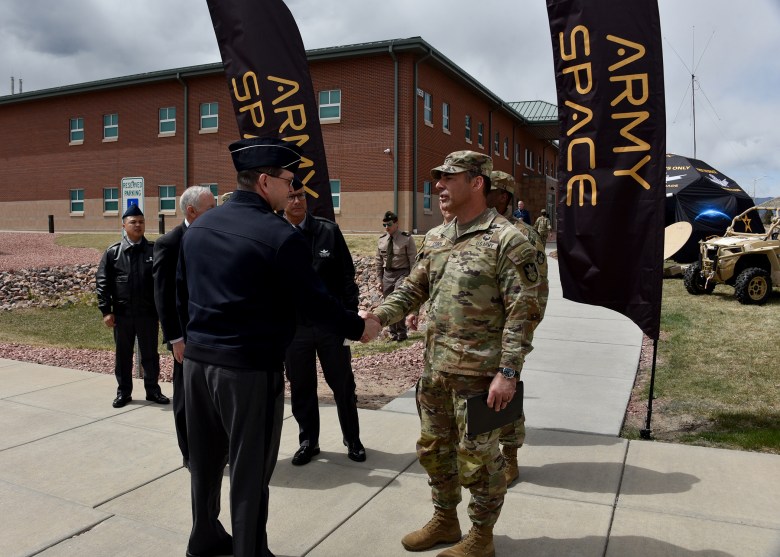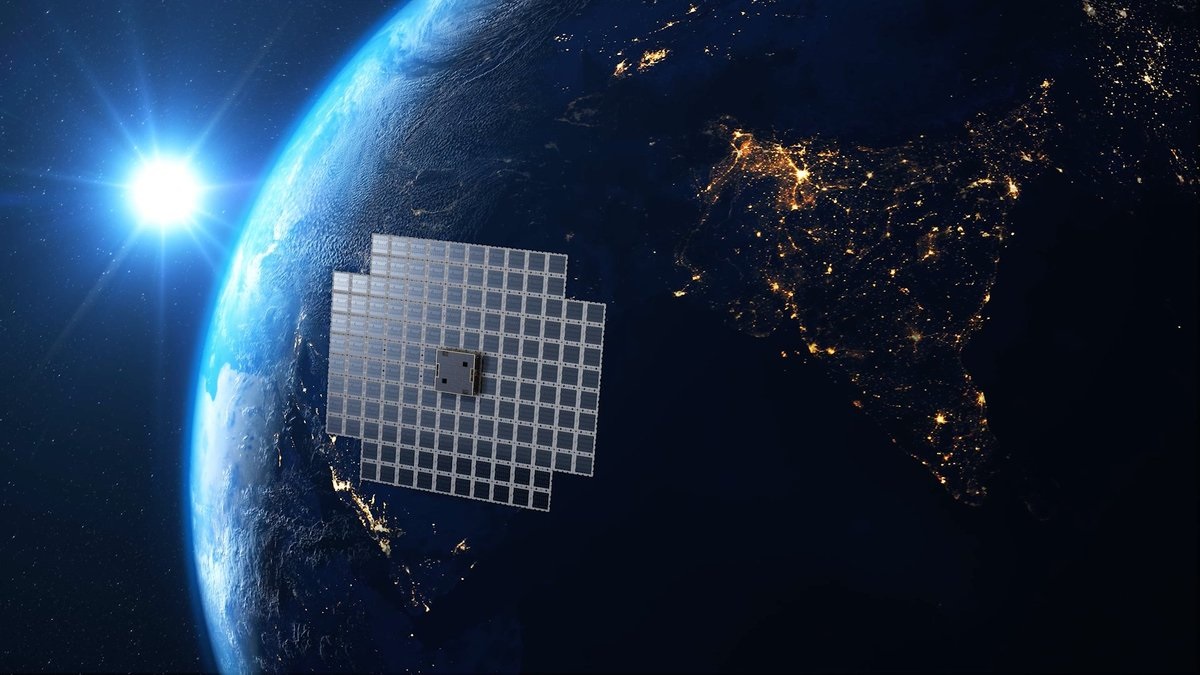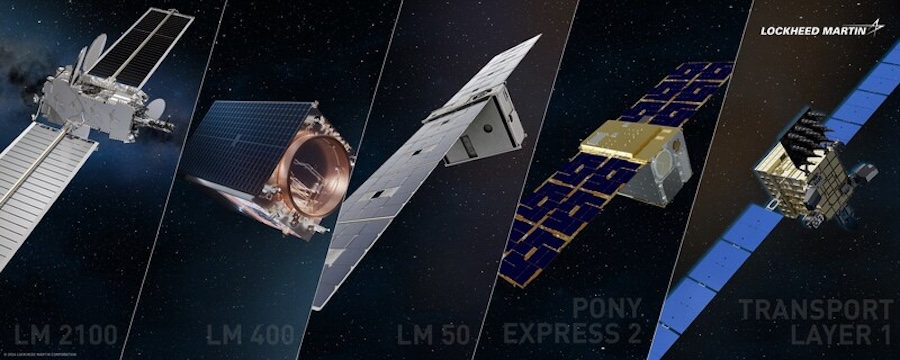As the boundaries of warfare continue to extend beyond traditional battlegrounds, the U.S. Army is making strides into the space domain.
With satellite capabilities now vital to military operations, the Army is launching initiatives to bolster its space warfare expertise and develop technologies to counter adversaries’ orbital assets. While not intended to rival the Space Force, this move highlights what officials describe as an increasing synergy between ground and orbital operations.
The ongoing conflict in Ukraine has served as a stark reminder of the critical role space systems play in contemporary warfare. Russia’s deployment of jamming systems and other disruptive technologies has provided a sobering preview of future combat scenarios, the head of U.S. Space Command, Gen. Stephen Whiting, said at the recent Air & Space Power Association’s Defense Space Conference in London.
“Russia’s aggression shows that forces on land, at sea and in the air can no longer move or conceal themselves without being tracked and targeted from space or by space-enabled systems,” Whiting said.
U.S. military planners now anticipate that China would adopt similar tactics in a conflict in Asia-Pacific, putting American forces in electronically contested environments where reliable satellite communications and navigation are no longer guaranteed.
In the face of such scenarios, Army officials argue that ground forces must be better equipped to defend against — and, if necessary, disrupt — an adversary’s space capabilities.
As the U.S. military’s largest consumer of space-based services, the Army “has to be able to mitigate risks from dependencies on space while seizing the initiative to exploit adversaries’ use of space,” said Lt. Col. Joe Mroszczyk, commander of the U.S. Army’s 1st Multi-Domain Effects Battalion at Joint Base Lewis-McChord, Washington.
Mroszczyk runs a unit of about 500 soldiers specializing in multi-domain operations, a military term for the integrated employment of capabilities across multiple domains — land, air, sea, space and cyberspace — to gain a competitive advantage over adversaries.
He pointed out that despite the growing importance of space systems, soldiers across the Army have limited exposure or education space capabilities that are viewed as overly technical or too classified to discuss.
Across every command level in the Army, “we rely on space for intelligence, missile warning, weather, positioning, navigation and timing; all of those different mission areas support every aspect of how we operate,” Mroszczyk told SpaceNews. “And so we need professionals to help focus on how we can integrate those capabilities better and on how to address vulnerabilities.”
Mroszczyk is a staunch proponent of an Army initiative to establish a dedicated space career field for enlisted soldiers, known as Army Space Military Occupational Specialty (MOS). This would allow non-commissioned officers (NCOs) and junior personnel to specialize in space operations throughout their careers.
The proposal, put forth by the Army’s Space and Missile Defense Command, has yet to be approved by the Army’s top leadership.
Currently, only officers have a designated space operations career path, while enlisted soldiers serving in space-related roles come from other fields like engineering, air defense and intelligence. These soldiers then rotate back to their original branches after a single tour.

More space training
Col. Donald Brooks, commandant of the Army’s Space and Missile Defense Center of Excellence in Huntsville, Alabama, highlighted the growing emphasis on space in military training. The center, which oversees the Army’s schoolhouse for missile defense and space operations, has seen a steady increase in soldiers enrolling in space-focused courses.
“Every year, thousands of soldiers come through our doors to learn about the vital role space plays in modern warfare,” Brooks said in an interview. “The sheer number of troops being trained in this domain reflects just how critical satellite-based operations have become. Whether it’s communications, navigation, or missile detection, space capabilities are embedded in everything we do on the battlefield.”
Brooks noted that training programs are designed to provide soldiers with a basic understanding of satellite systems and prepare them for the challenges of operating in environments where adversaries may try to disrupt or deny access to those systems. “We have to ensure they can operate effectively even when satellite signals are compromised,” he said.
Over the last five years, over 30,000 soldiers have attended the space training program, according to Brooks. Members of the Marine Corps, the Navy and officers from international allied militaries also seek participation, he added.
“Space is truly a joint multinational and commercial environment where we’ve got to work collectively.”
Army’s ‘Space Vision’
In a significant development, the Army published a “Space Vision” document in January, laying out a bold new strategy for the military’s engagement with the space domain. Brooks said this high-level guidance document marks a departure from traditional military thinking, elevating space systems from a supporting role to a critical component of ground warfare.
The document calls for greater investment in space expertise and, more strikingly, commits the Army to develop capabilities to “interdict or disrupt” adversaries’ satellites if necessary to defend U.S. and coalition forces.
“It’s not just about using space assets to support ground operations anymore. It’s about denying the enemy the ability to use their space capabilities against us,” said Brooks.
This includes developing weapons to disable satellites via electronic warfare or kinetic attacks. By doing so, U.S. forces could undercut rivals’ efforts to monitor and target American assets from space.
An assumption that U.S. ground operations are being watched from above will require the Army to develop technologies to camouflage and conceal from satellite observation, as well as more active measures, such as tactical lasers, to disrupt enemy space assets, Brooks explained. The Army is also eyeing high-altitude platforms — drones or balloons — equipped with jammers to disrupt adversary navigation satellite signals.
Adapting to the new reality
Space isn’t just about what’s happening in orbit but also about how systems in space support soldiers on the ground, noted Col. Pete Atkinson, space division chief at the Army’s Strategic Operations Directorate.
In the wake of the Space Force’s creation in 2019, the Army made some key decisions, Atkinson explained in a recent Army Magazine article.
In a move that might seem counterintuitive for a service looking to expand its space presence, the Army transferred its satellite operations and theater missile-warning units to the fledgling Space Force. This was less about relinquishing capability and more about streamlining operations as the Space Force has the expertise to manage these assets.

Atkinson pointed out that the creation of new all-domain formations across the Army was another critical move. These units, designed to operate seamlessly across land, air, sea, space and cyberspace, represent the Army’s response to the dynamic space environment and growing adversary use of space for military purposes.
A telling sign is where it’s choosing to deploy these new capabilities. Atkinson said the majority of the Army’s space forces are now being assigned to military commands in the Indo-Pacific and Europe, a move designed to better integrate with regional combatant commands and strengthen relationships with allies.
Pushback from prominent think tank
The Army’s push to expand its space expertise has not been without controversy. The Mitchell Institute for Aerospace Studies, a nonpartisan think tank affiliated with the Air and Space Forces Association, has been vocal in its criticism of the Army’s space-focused initiatives. In a series of op-eds, the Institute argued that the Army is seeking to duplicate the mission of the U.S. Space Force, which was specifically created to manage and coordinate military space operations.
The Mitchell Institute questioned the Army’s initiatives and called for its space investments to be further consolidated under the Space Force.
Whiting, the head of U.S. Space Command, expressed disagreement with the Mitchell Institute and insisted that the role of space in modern warfare is too critical to be confined to a single service, stressing that space knowledge should be shared across the military branches.
“Space expertise doesn’t need to be exclusive to the Space Force,” Whiting said in response to the recent debate. He pointed out that the Army needs space expertise to support maneuver warfare.
He also highlighted the successful collaboration between the Army and the Space Force in recent years, including the smooth transition of satellite management responsibilities from the Army to the Space Force.
Complementary, not competitive
As the debate continues over the Army’s growing involvement in space operations, officials maintain that these efforts are not about inter-service rivalry but rather an adaptation to the complexities of modern warfare.
“The Space Force was designed to organize, train and equip formations to operate in space, to support joint force operations, and to defend assets in that domain,” Mroszczyk said. “Their ability to do that is absolutely part of their mission.”
Conflicts in regions like the Indo-Pacific, he added, will demand an increased focus on surviving in environments where detection is constant. “Once detected, we need to be able to conduct survivability maneuvers that enable us to continue fighting.”
For the Army, space operations are seen as an extension of their mission to dominate on land, Mroszczyk said.
He underscored key operational differences between the services: while the Space Force largely operates from fixed locations, Army space personnel are embedded within combat units, moving and fighting alongside them. “Our space operators will be out there with soldiers, with cannons and rifles, while also managing their space kit,” he said.
This combination of tactical and technical skill, Mroszczyk observed, attracts a unique type of soldier — those who want to remain engaged in ground combat but are also intellectually stimulated by space operations. Drawing from his own transition from artillery to space, he added, “There are certain soldiers who want a more tactical, hands-on role but are also excited by the challenges of space.”
While acknowledging the perennial competition for resources within the Pentagon, Mroszczyk said the Army’s space initiatives are meant to be funded within the existing Army budget.
Space Force Chief: “We’re all in this together”
In response to questions from SpaceNews about the Army’s expanding role in space operations, Gen. Chance Saltzman, the Space Force’s chief of space operations, weighed in with a perspective emphasizing collaboration over competition.
“Space is an important domain for all the other domains,” Saltzman said at the recent Air Space & Cyber Conference. “It doesn’t surprise me in the least that all the services are thinking about how space might benefit them and the missions that they have.” This acknowledgment of space’s universal importance across military operations sets a tone of understanding for the Army’s increased interest in the domain.
Addressing concerns about potential competition for talent or responsibilities, Saltzman was clear: “It’s not a competition. We’re all in this together.”
He emphasized the Space Force’s role as a resource for other services, stating, “We’re the best trainers of space expertise in the world, and we offer our courses to all of our sister services and joint commands.”
However, Saltzman cautioned that with limited resources at the Defense Department, the services need to be careful not to duplicate efforts. “The trick will be in the balance of how best to spend our resources,” he explained, adding that it’s a complex issue that won’t have a binary answer. “Resources will need to be spread across, based on the mission needs.”
Notably, Saltzman pushed back against the notion that increased investment in space capabilities by other services necessarily means less for the Space Force.
“I’m still not of the mindset that this is a zero-sum game and everything has to come out of somebody else’s budget,” he stated. “The defense budget ebbs and flows, and you have to understand where you are in that process. But I don’t think we have to steal from somebody to get done what we want to get done.”
In fact, Saltzman sees potential benefits in the other services’ growing interest in space. “There’s perfectly valid reasons for all the other services to invest in space,” he noted. “It’s an important domain to all the missions of the Department of Defense. That’s what we keep saying. It’s a critical
enabler, not just to the Space Force, but to everybody.”
This perspective opens the door for potential synergies between the services. As Saltzman put it, “If there’s something that they can do that we won’t do, great. If there’s something that we can do that they don’t need to do anymore, great. We can share resources.”
This article first appeared in the October 2024 issue of SpaceNews Magazine.



